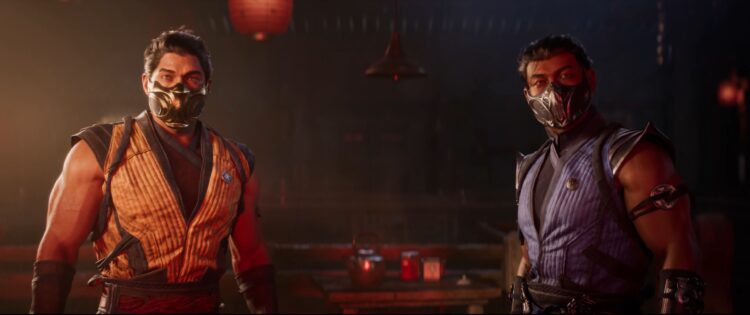In the realm of video games, there are titles that transcend time, captivating audiences with their innovative gameplay, iconic characters, and gripping narratives. Among these timeless classics, Mortal Kombat stands tall as one of the pioneers that forever altered the landscape of fighting games. Released in 1992 by Midway Games, Mortal Kombat 1 shattered boundaries, pushing the boundaries of both violence and storytelling, birthing a legendary franchise that continues to thrive even three decades later.
Mortal Kombat 1 burst onto the scene with a thunderous impact, drawing players into a dark and brutal world where warriors from different realms converge to compete in a deadly martial arts tournament. Unlike its contemporaries, Mortal Kombat introduced a level of realism and grittiness that had not been seen before, thanks to its groundbreaking digitized graphics. Characters were portrayed by actors and filmed, giving them an uncanny lifelike appearance. This technique not only revolutionized the genre but also added a unique layer of authenticity that resonated with players.
One of the defining aspects of Mortal Kombat 1 was its bold and audacious approach to violence. The game featured graphic fatalities, finishing moves that allowed players to obliterate their opponents in the most gruesome and spectacular ways imaginable. From ripping out spines to decapitations, the fatalities became synonymous with Mortal Kombat and sparked a fierce debate about the portrayal of violence in video games. This controversy, however, only fueled the game’s popularity, making it a subject of discussion among gamers and non-gamers alike.
While Mortal Kombat 1 gained notoriety for its violence, it also had a rich and immersive storyline that captured the imagination of players. The game revealed a captivating lore, introducing us to iconic characters such as Liu Kang, Raiden, Scorpion, Sub-Zero, and many more. Each character had their own unique background and motivations, and players were able to unravel their stories as they progressed through the tournament. The narrative depth added a layer of substance to Mortal Kombat 1, setting it apart from its competitors and turning it into more than just a fighting game.
The gameplay mechanics of Mortal Kombat 1 were accessible yet challenging, striking a delicate balance that appealed to both casual players and seasoned fighting game enthusiasts. With its signature five-button layout (high punch, low punch, high kick, low kick, and block), Mortal Kombat provided a simple yet versatile control scheme that allowed players to execute a wide array of moves, combos, and special attacks. Mastering the game required precision, timing, and an understanding of each character’s unique abilities, offering a satisfyingly deep and rewarding experience.
Beyond its technical achievements, Mortal Kombat 1 also left an indelible mark on popular culture. Its iconic theme music, composed by Dan Forden, became instantly recognizable and synonymous with the franchise. The game’s catchphrases, such as “Finish Him!” and “Fatality,” became part of the gaming lexicon, seeping into everyday conversations and cementing Mortal Kombat’s status as a cultural phenomenon.
Mortal Kombat 1’s impact extends far beyond its initial release. It laid the foundation for a franchise that has spawned numerous sequels, spin-offs, movies, and even an animated series. It introduced a level of depth and storytelling to the fighting game genre that set new standards and inspired generations of game developers. It also paved the way for advancements in graphics, motion capture, and gameplay mechanics that continue to shape the industry today.
As we reflect on the legacy of Mortal Kombat 1, it is impossible to ignore its pivotal role in shaping the gaming landscape. It pushed boundaries, challenged norms, and sparked conversations. It captured the hearts of millions of players worldwide, becoming a cultural phenomenon that continues to thrive. Mortal Kombat 1 will forever be remembered as a groundbreaking masterpiece that defied expectations and unleashed a fury that has echoed through the halls of gaming history.
One of the key elements that set Mortal Kombat 1 apart was its character roster. The game featured a diverse lineup of fighters, each with their own distinctive style and abilities. From the lightning-fast Liu Kang to the thunder god Raiden, and the enigmatic ninjas Scorpion and Sub-Zero, players had a wide range of characters to choose from, each with their own set of special moves and fatalities. This variety allowed players to find their preferred playstyle and engage in thrilling battles with friends or AI opponents.
Moreover, Mortal Kombat 1 introduced the concept of secret characters, adding an element of mystery and excitement to the game. Characters like Reptile, a hidden green-clad ninja, appeared only under specific conditions or through hidden codes. This discovery fueled the imaginations of players, who scoured the game and shared their findings with fellow enthusiasts, enhancing the game’s replayability and fostering a sense of community.
In addition to the memorable characters, Mortal Kombat 1 featured intricately designed arenas that served as the backdrop for intense battles. Each stage had its own unique theme and interactive elements, adding depth to the gameplay. From the moonlit courtyard of the Wu Shi Academy to the sinister Goro’s Lair, the stages not only provided visually stunning settings but also influenced gameplay strategies, as players could use environmental hazards to gain an advantage or deliver devastating attacks.
The innovative Fatality system in Mortal Kombat 1 deserves special attention. These brutal finishing moves allowed victorious players to showcase their dominance over their opponents. With a series of button inputs, players could unleash a spectacular and gory Fatality, which often involved dismemberment, impalement, or other gruesome acts. The Fatality animations were meticulously crafted, showcasing the game’s attention to detail and adding a sense of spectacle that left players in awe.
Furthermore, Mortal Kombat 1 introduced the concept of “The Pit,” an iconic stage that became synonymous with the franchise. This stage featured a bridge in the background, and with the right timing and specific inputs, players could perform an uppercut that sent their opponents hurtling to their doom. The victorious fighter would then be rewarded with an infamous “Toasty!” soundbite, further solidifying the game’s reputation for its memorable moments and Easter eggs.
Beyond its core gameplay, Mortal Kombat 1 also made significant strides in terms of technical innovation. The digitized graphics, as mentioned earlier, were groundbreaking for their time. They not only provided a lifelike appearance to the characters but also added an element of authenticity and immersion. The visuals, combined with the game’s fluid animations and responsive controls, created a sense of weight and impact in the combat that few games had achieved before.
Mortal Kombat 1’s success was not confined to the realm of video games alone. It also left a lasting impact on the entertainment industry at large. The game’s popularity led to the creation of movies, TV shows, and a vast array of merchandise. Mortal Kombat became a household name, transcending the gaming world and becoming a cultural phenomenon that influenced fashion, music, and even inspired its own dedicated fan base.
In conclusion, Mortal Kombat 1’s unique combination of innovative gameplay, realistic graphics, immersive storytelling, and unforgettable characters left an indelible mark on the gaming landscape. It pioneered new horizons, both in terms of violence and narrative depth, pushing the boundaries of what was possible in a fighting game. Mortal Kombat 1 will forever be celebrated as a trailblazer that paved the way for future installments, solidifying its place as a legendary and cherished title in the annals of gaming history.



No Comments
Leave Comment